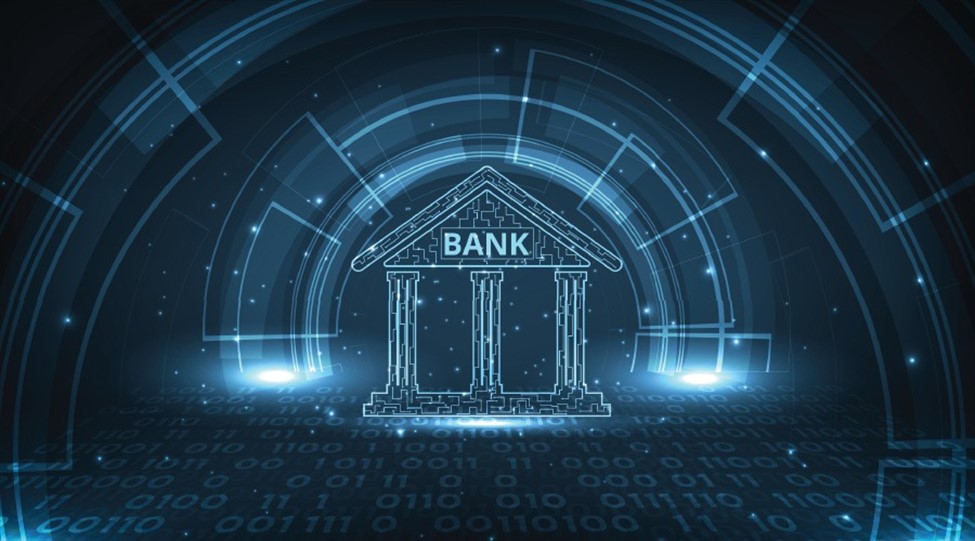For decades, we’ve been conditioned to trust the banking system. Our salaries are deposited there, loans are arranged, and savings rest in accounts. On the surface, everything appears stable. Banks still carry an institutional respect, and most people see them as unwavering pillars of modern society.
But beneath this peaceful facade, deep-seated tensions are undermining the global financial architecture. Since the financial crisis of 2008, warning signals have multiplied relentlessly—yet the majority remain unalarmed. The normalization of instability—through ongoing inflation, abnormal interest rates, and relentless interventions by central banks—has numbed collective vigilance.
What if this widespread trust is, in reality, misplaced? What if the real risk today lies in remaining exposed to the banking system with no alternative? More investors are now questioning the status quo—and for good reason: de-banking is no longer a marginal concept, but a considered strategy for preserving wealth.
The modern banking system is structurally fragile
Far from being a fortress of strength, the banking system rests on foundations that are, at best, fragile and artificial. Its perceived stability conceals a profound systemic vulnerability, born from risky banking practices, excessive global interdependence, and a yawning gap between what banks promise and what they can realistically deliver.
For investors concerned with wealth protection, it’s essential to understand that this model isn’t designed to withstand prolonged crises or a widespread breakdown in confidence. Rather than being a safety net, it’s increasingly becoming a source of fragility within traditional wealth strategies.
Fractional Reserve and Global Interconnection
At the heart of our current financial system lies the principle of fractional reserve banking. Banks retain only a fraction of customer deposits in actual liquidity, lending out the remainder—often repeatedly. In effect, they create money ex nihilo, multiplying the money supply artificially through your deposits.
While this works during growth phases, it’s a ticking time bomb in times of liquidity crisis. If a significant number of depositors simultaneously seek withdrawals—a bank run—the bank lacks the structure to cope. This phenomenon can ignite a deadly domino effect.
Worse still, global interconnection of banks means troubles in one country can trigger panic or shutdowns elsewhere. With financial globalization, the banking system resembles a global house of cards—a small shock could tumble the entire structure.
Recent Crises: Warnings Ignored
Recent history offers multiple ignored alarms. In 2013, Cyprus, embroiled in debt crisis, froze thousands of bank accounts and unilaterally confiscated depositor funds via a bail-in mechanism. This was a rude awakening for depositors who naively believed their money was secure.
In 2008, the collapse of Lehman Brothers unleashed a global financial crisis. The banking system proved so fragile that only massive bailouts from governments and central banks prevented total collapse. Since then, fundamentals haven’t improved—they’ve worsened. Public debt has swelled, and dependence on artificial monetary policies has reached unprecedented levels.
Today, emerging systemic threats include negative interest rates encouraging debt excess, hidden inflation gnawing away at purchasing power, and the rise of Central Bank Digital Currencies (CBDCs). Though pitched as innovation, these programmable currencies could give governments total control over your finances—including the ability to block transactions or make funds expire based on usage or timing.
This isn’t just about your money anymore—it’s about financial freedom.

The Myth of Banking Security
The popular belief in the security of bank-held assets often rests on an outdated perception of the role and stability of financial institutions. In reality, this sense of stability is largely illusory. It is based on theoretical promises, rarely fully understood by depositors, and on a skewed interpretation of government-backed guarantees.
In a world where economic crises are becoming increasingly frequent and where even governments are forced to bail out systemic banks, it is reasonable to question the inviolability of savings held in checking or savings accounts. Today, protecting your wealth requires a critical reassessment of the limits of the traditional banking system.
Highly Relative “Guarantees”
The bank deposit guarantee scheme, often cited as a pillar of security, is in fact strictly limited and far from absolute. In the eurozone, this guarantee is capped at €100,000 per depositor, per institution. If your bank were to fail, only these funds would, in principle, be protected.
However, what many people don’t realize is that this protection is neither automatic nor immediate. It depends on public or semi-public funds that are often underfunded, and payout delays can stretch over several weeks or even months. In the event of a widespread banking crisis, these guarantees could become inoperable, due to liquidity shortages or extraordinary restrictions imposed by the government or the central bank.
Moreover, it’s essential to understand that this protection does not take into account the real value of money at the time of reimbursement. During periods of high inflation, the amount returned may have lost significant purchasing power. Far from being an effective shield, this guarantee may instead create a false sense of security, distracting attention from truewealth protection strategies.
Invisible but Very Real Risks
Beyond the limits of deposit guarantees, numerous legal and operational risks exist—often underestimated or entirely overlooked by savers. Banks have the legal authority to freeze accounts in cases of suspected—sometimes unfounded—illegal activity, or simply at the request of a regulatory authority.
In some countries, a routine outgoing international transfer, or the purchase of a crypto-related asset, may trigger an automatic alert, resulting in a temporary account freeze pending “investigation.” This phenomenon, still rare a few years ago, is becoming increasingly common as financial regulations tighten globally.
Worse still, the rise of bank surveillance technologies, combined with the full digitization of financial flows, means that your transactions are visible, tracked, and potentially judged. The development of Central Bank Digital Currencies (CBDCs) could accelerate this trend, making every cent traceable, blockable, or even programmable based on political, health, or social criteria.
These evolutions fundamentally challenge personal financial sovereignty. They pave the way for a society in which money no longer truly belongs to you, but is granted conditionally. In this context, the direct ownership of tangible assets, outside the banking system, becomes not just a relevant strategy—but a necessary one.

Toward Wealth Sovereignty: A Strategic De-Banking Approach
Given the growing fragility of the banking system and the gradual loss of control over money we think we own, the real question is no longer “Should I leave the banking system?” but “How do I exit it intelligently?” The goal is not to act out of panic or fear, but to implement a structured, progressive, and legally compliant transition toward genuine financial resilience.
Wealth sovereignty is no longer a luxury reserved for the few. It has become a strategic necessity for any investor aiming to protect capital from systemic risks, monetary inflation, and institutional instability.
De-Banking as a Strategy
The concept of de-banking doesn’t mean cutting all ties with banks. It means reducing direct exposure to the banking sector by diversifying holdings into more resilient alternatives. This requires rethinking the structure of one’s wealth to make it less vulnerable to account freezes, seizures, or access restrictions, especially during crises or regulatory tightening.
The strategy involves gradually reallocating part of your capital into tangible assets that are not subject to the same counterparty risks: physical gold, Bitcoin, real estate, or even private infrastructure. This repositioning helps reduce dependence on the banking system while maintaining a level of liquidity and flexibility.
This approach aims to strengthen wealth resilience in the face of economic, geopolitical, or technological disruptions. It gives you the ability to preserve value, transfer it, and use it freely—without needing permission from a financial intermediary.
Sovereign Assets: Gold, Bitcoin, Direct Ownership
At the core of this strategy lie two major sovereign assets: physical gold and Bitcoin. They operate independently of governments, central banks, or any financial institution.
- Physical gold, when stored outside the banking system, has remained for centuries a benchmark of wealth protection. It withstands inflation, bank failures, and can be transferred without third-party involvement.
- Bitcoin, often misunderstood, is not just a speculative asset. When held directly (via self-custody or secure multisig storage), it becomes a modern tool of financial sovereignty. Immutable, divisible, and portable, it allows one to carry wealth across borders—even mentally, via a single recovery phrase.
An alternative investment fund like HEVEA Genius integrates both assets into a structured framework. It offers diversified exposure combining direct ownership, structured governance, Bitcoin mining for additional yield, and secure storage outside traditional banking circuits. It’s a concrete solution for those seeking to combine performance, control, and security.
Real Security: Governance, Transparency, Ownership
In a world where institutional promises grow weaker, real wealth security relies on three core pillars: direct ownership,transparent governance, and a robust legal framework.
- Direct ownership means you hold your assets without intermediaries. No paper promises, no hidden debt. You own what you’ve actually bought.
- Transparent governance ensures that strategic decisions—such as asset allocation, storage, and security—are traceable, understandable, and made in the best interest of the investor, not the institution.
- Finally, a stable and internationally recognized legal framework guarantees continuity, legal protection, and the ability to act—even during geopolitical or fiscal disruptions.
Building true wealth sovereignty is no longer utopian—it’s a rational choice. It represents a profound paradigm shift: no longer blindly delegating capital to fragile structures, but consciously choosing to understand, control, and own.

Conclusion: Choosing Lucidity Over Fear
We live in an era where the appearance of stability conceals deep systemic cracks. The illusion of safety—fueled by institutional promises and well-oiled banking routines—has ironically become one of the greatest risks to investor capital. Continuing to believe that “everything will be fine” simply because “it always has been” is to ignore the clearest signs of ongoing economic and monetary transformation.
De-banking your wealth isn’t an escape or an extreme act. It’s a rational response to a changing world, for those who wish to protect, control, and transmit their capital sovereignly. It’s a long-term strategy, built on clear-sighted, structured decisions aligned with today’s risks.
The alternative exists: it combines tangible assets, direct ownership, secure storage, controlled Bitcoin mining, and transparent governance. It doesn’t demand a radical break, but offers a calm and compliant transition, within a clear legal framework.
This isn’t survivalism.
It’s lucidity.
